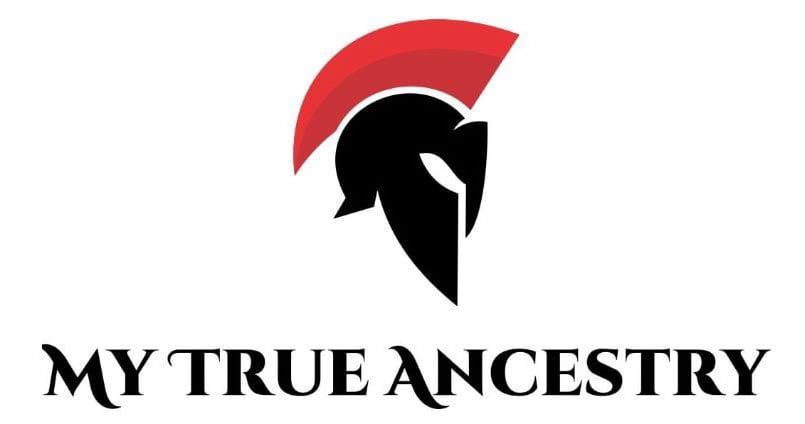Genetic Chronicles: Unveiling Pre- and Post-Black Death Cambridgeshire





Archaeological Sites in Cambridgeshire: Insights into the Past
The archaeological landscape of Cambridgeshire provides an extraordinary window into medieval English life, spanning from late Saxon settlements through the devastating Black Death and beyond. These sites, excavated over several decades, have yielded thousands of human remains and countless artifacts that collectively tell the story of communities adapting to conquest, plague, and social transformation across nearly eight centuries.
Church End Cherry Hinton reveals a glimpse into a vibrant late Saxon to Norman settlement, located just six kilometers southeast of Cambridge. This remarkable site functioned as a prominent aristocratic or proto-manorial center established in the late 9th to mid-10th century. Excavations conducted in 1999 unearthed a cemetery containing over 670 graves, representing nearly 980 individuals buried with consistent west-east alignment and uniform burial rites.
The burials, dated through radiocarbon analysis and stratigraphic evidence to between 940 and 1120, showcase a community largely involved in agricultural labor. The majority of these interments occurred after the Norman Conquest, indicating a flourishing rural community that successfully adapted to new political realities. Fascinating artifacts such as pottery and sculptures help establish the chronological framework for these burials, while DNA extraction from 48 individuals, equally split between males and females, provides valuable genetic insights into post-Conquest demographic patterns and population movement.
When we read about vanished civilizations, it’s easy to forget that their descendants still walk among us. If you’re curious which of them you might share roots with, you can explore your own genetic links at www.mytrueancestry.com.
This medieval parish church in Cambridge presents a rich tapestry of urban history spanning several centuries. Although first documented in 1217, archaeological and historical evidence suggests the church likely dates back to around 940-1100. Excavations beginning in 1972 have revealed over 210 skeletons from an estimated original population of 2500-3500 individuals, representing a fascinating cross-section of parish life from the late Saxon period through 1365.
The cemetery captures the lives of parishioners from various socio-economic backgrounds, including agricultural workers who were likely poorer than the urban average yet vital contributors to Cambridge's economic life. Radiocarbon dating coupled with documentary sources and ancient DNA analysis from 49 individuals has been crucial in painting a picture of a community navigating the challenges and opportunities presented by the Norman Conquest and subsequent medieval transformations.
Located at the heart of medieval Cambridge, the Hospital of St John the Evangelist functioned as a cornerstone of charitable care from its founding around 1190-1200 until 1511. This institution, administered under Augustinian rule by 1250, provided both social and spiritual support to the poor and infirm of Cambridge. The hospital's detached cemetery, revealed during excavations in 2010-2011, has uncovered nearly 400 skeletons from a potential population of 1000-1500.
Radiocarbon evidence suggests burials began in the early 13th century and continued through the late 15th century. The cemetery primarily hosts individuals described in contemporary documents as 'charitable inmates,' though historical sources reveal the institution excluded certain vulnerable groups requiring intensive care, such as pregnant women. DNA analysis of 104 individuals provides insights into the genetic characteristics of this urban poor population, contributing to our understanding of medieval social care systems and their demographic impact.
The Augustinian Friary, established between 1279-1280 and 1289, became one of Cambridge's most significant religious institutions and centers of learning before its dissolution in 1538. Excavations have uncovered 72 burials, including 28 that have been thoroughly examined, offering a unique window into both monastic life and the broader religious community.
Archaeological evidence reveals two distinct burial practices that highlight social dynamics within the religious community. Friars were typically buried clothed, evidenced by surviving buckles and textile remnants, while lay individuals were wrapped in shrouds. Radiocarbon dating precisely spans the burial period from approximately 1290 to 1538, documenting the friary's entire operational history. Remarkably, DNA analysis has identified four individuals potentially linked to the Black Death, providing direct biological evidence of the pandemic's impact on religious communities.
Bene't Street Church stands as a steadfast witness to the waves of history from 1000 CE through the 1850s, including the devastating Black Death of 1349. Recent archaeological investigations of land associated with this ancient church have revealed graves that align chronologically with this tumultuous period. Among four skeletons uncovered at this site, DNA testing has confirmed positive connections to Yersinia pestis, the bacterium responsible for the Black Death.
This grim discovery provides direct biological evidence linking parishioners to the pandemic that reshaped medieval Europe. The burials, though mainly consisting of truncated individual interments and partial mass burial evidence, offer macabre yet invaluable testimony to Cambridge's experience during one of history's most devastating pandemics. These findings contribute significantly to our understanding of how the plague affected urban communities and individual lives.
Once a flourishing agricultural village, Clopton now stands as an archaeological testament to medieval rural life and its sudden transformations. Excavations have revealed a cemetery containing 70 skeletons dating from as early as the 10th century, representing a community with deep historical roots extending back to the late Saxon period.
The village's agrarian character is clearly reflected in the burial evidence and associated artifacts, which draw connections to the broader agricultural landscape of medieval Cambridgeshire. DNA analysis has revealed that three individuals tested positive for Y. pestis, providing additional evidence of the Black Death's penetration into rural communities. The genetic and artifactual evidence from Clopton illustrates how even small agricultural settlements were not isolated from the major demographic and epidemiological changes affecting medieval England.
Known for its poignant history linked to plague isolation practices, Midsummer Common reveals burials associated with pest houses used during epidemic outbreaks. This area serves as a somber reminder of medieval society's struggle against infectious disease, with skeletal remains dating roughly between 1450 and 1630 representing victims of various plague episodes.
The site reflects early public health strategies, including quarantine and isolation practices that became essential components of medieval plague management. While many individuals found at this location do not present DNA evidence of Y. pestis, the area nonetheless played a pivotal role in the narrative of medieval disease control and community resilience in the face of repeated epidemiological challenges.
This site, unearthed within a late 17th-century nonconformist cemetery, provides a fascinating glimpse into a different facet of religious life in post-medieval Cambridgeshire. Affiliated with the Quakers, the burials here reflect the diverse social backgrounds that contributed to the rich religious tapestry of the region during a period of significant religious transformation and tolerance.
The cemetery represents the emergence of alternative Christian traditions following the English Civil War and Restoration, demonstrating how religious practices evolved and diversified in response to changing political and social circumstances. The site adds an important later chronological dimension to the archaeological record, bridging medieval religious practices with early modern religious pluralism.
These archaeological investigations employ cutting-edge scientific techniques including radiocarbon dating, stratigraphic analysis, DNA extraction, and pathogen detection to unlock secrets of ancient lives. Each skeleton and artifact contributes to a comprehensive understanding of demographic changes, disease patterns, and social structures across nearly eight centuries of English history.
The integration of genetic analysis with traditional archaeological methods has revealed unprecedented insights into medieval population dynamics, including evidence of migration patterns, kinship networks, and biological responses to major historical events like the Norman Conquest and Black Death. Pathogen DNA recovered from skeletal remains provides direct biological evidence of historical disease outbreaks, complementing documentary sources with scientific data.
These archaeological sites collectively illuminate the complex social, economic, and biological history of medieval Cambridgeshire. From thriving Saxon settlements and Norman adaptations to monastic communities and charitable institutions, each location contributes unique elements to our understanding of how medieval communities lived, worked, worshipped, and died.
The sites not only uncover the physical remains of those who once thrived in Cambridgeshire but also provide valuable genetic insights into past populations' responses to challenges like conquest, plague, and social transformation. They anchor our understanding of how medieval communities adapted and weathered major historical upheavals, providing tangible connections to shared human experiences across centuries. The DNA evidence, in particular, creates bridges between medieval England and broader European demographic patterns, revealing how local communities participated in continent-wide historical processes.
https://www.science.org/doi/10.1126/sciadv.adi5903
Discover how your DNA connects to ancient civilizations at www.mytrueancestry.com.
Comments